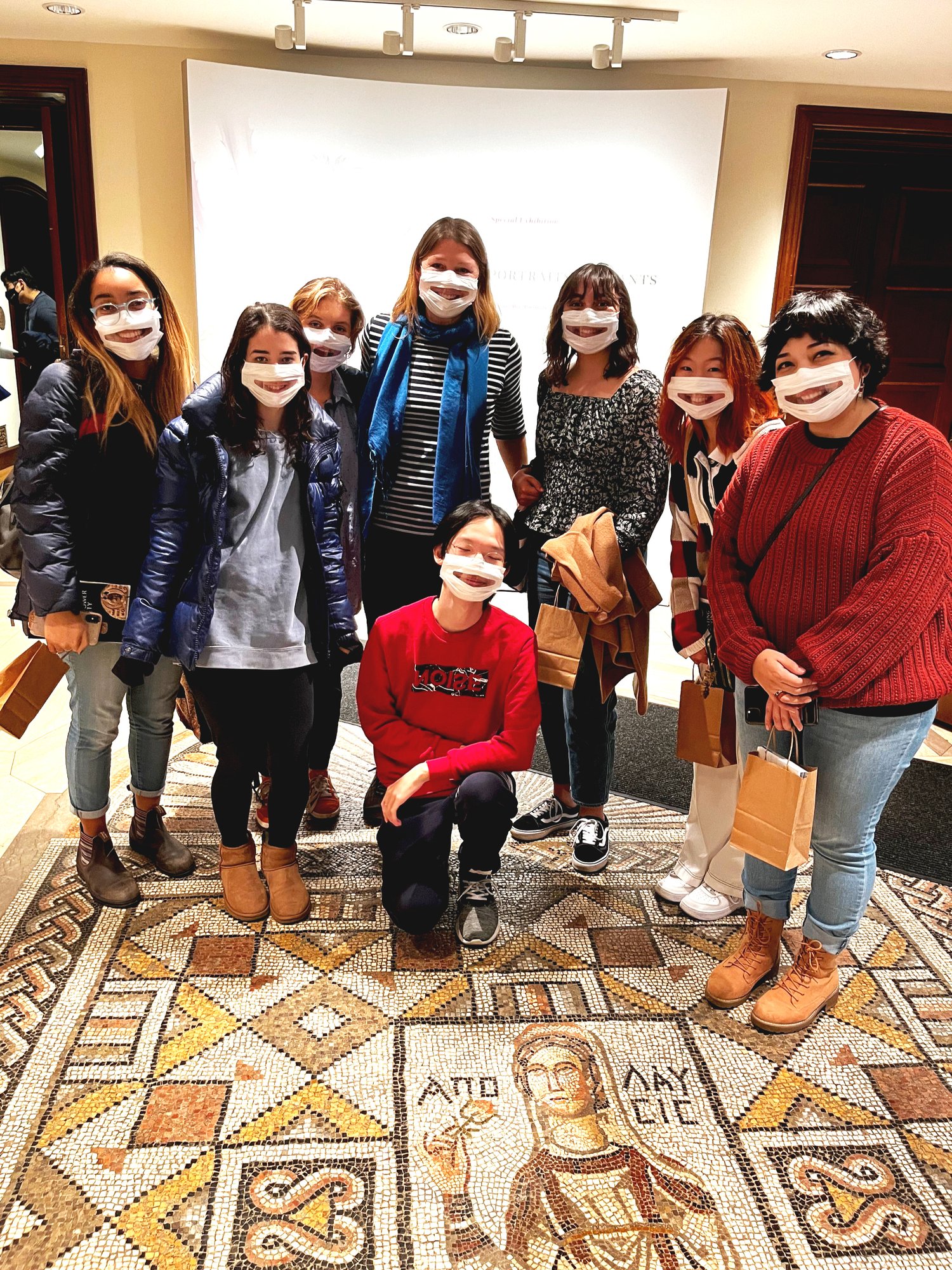Roman Household Decorative Arts in Pompeii at the Time of Antioch
This blog piggybacks on Jen’s post of the video of the two newest excavated houses in Pompeii and Greg’s earlier post about Dobbins and Gruber’s digital reconstructions, including The House of the Faun at Pompeii. In this blog, I will share some of my experiences from the summer when I worked as a classicist with a team of mostly architects to create digital reconstructions of rooms in the Villa Ariana, in Stabiae--outside of Pompeii. We were working for Italy’s Restoring Ancient Stabiae Foundation. Here is a recreation of the seaside villa prior to its destruction by Vesuvius:
Our purpose was to document the interior for future generations. Unfortunately, our villa is falling off its precarious site atop a cliff. At one time that cliff overlooked the Bay of Naples, about four miles south- east of Pompeii. Some of you may remember that Stabiae was where Pliny the Elder died during the volcano’s eruption. I was assigned Room 7 and specifically the west wall. First we started with old-school scale drawings and orthographic drawings. Here is a photograph I took of my wall with a digital camera:
Then we incorporated technologies such as Lidar, total station and EDM. Here is the Lidar reconstruction of my wall in the room:
At the time, our goal was more preservation than recontextualizing. Thinking back, many of the mosaics were already removed and are displayed in the MANN, the National Archaeological Museum in Naples. Surviving examples of the mosaics show decorations of geometric design, similar to some in Antioch. Pompeii’s mosaics tended to be less elaborate than Antioch’s, because Antioch was richer. Pompeii’s spectacular Alexander the Great mosaic that Greg mentioned, was an exception. (The original of that, is also in the MANN and a copy is in Pompeii.) Because Antioch was situated on the western end of the Silk Road, it was probably richer than the whole Bay of Naples area, combined.
As my photo shows, the Villa Arianna is best known for its decorative frescos, so typical of elite Roman Villas. Perhaps you will recognize this one—one of four depicting the four seasons.
Tommy Tripp




